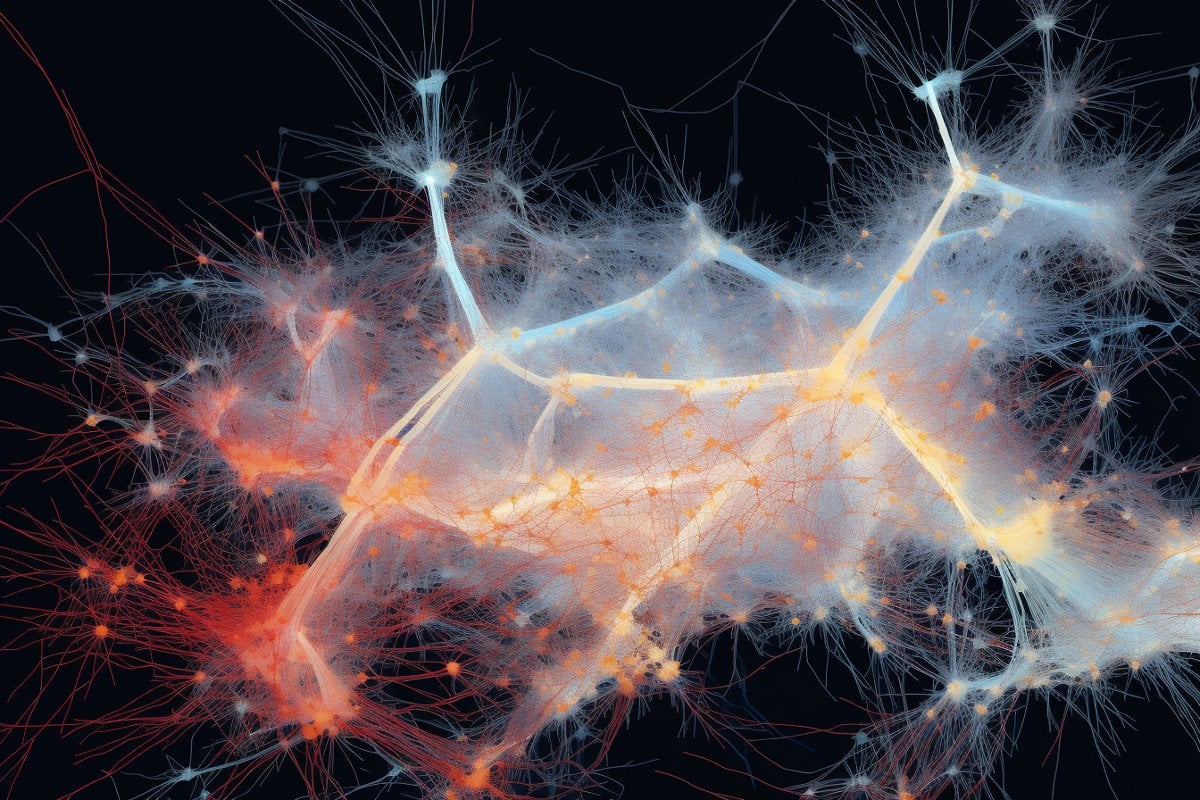Learn about brain health and nootropics to boost brain function
New Map Shows How Our Neurons Communicate

Summary: Researchers from Cleveland Clinic and OHSU have unveiled a pioneering technique for charting the intricate conversations occurring within our brains. Such insights are key to decoding behavioral alterations in neurological disease patients.
The innovative tool, CaMPARI, allows scientists to witness brain activity in real-time, marking active neurons red and inactive ones green. This breakthrough could offer pathways to better treatments and understanding of diseases like Alzheimer’s.
Key Facts:
> The study, using the CaMPARI system, can map real-time brain activity by highlighting active neurons in red and inactive ones in green.
This research is significant for understanding behavior and personality changes in Alzheimer’s disease and related disorders.
The team’s findings, recently published in Nature Communications, have the potential to shape the future of cognitive neuroscience, with the promise of improved treatment options.
Source: Cleveland Clinic
A research team led by Cleveland Clinic and Oregon Health and Science University (OHSU) has developed a new method for mapping how the parts of the brain “speak” to each other, critical to understanding behavior changes in patients with neurological disease.
Diseases like Alzheimer’s disease change how patients communicate and act, affecting their relationships and well-being. Cleveland Clinic’s Hod Dana, PhD, is collaborating with Jacob Raber, PhD, an OHSU behavioral neuroscientist, on mapping out the electrical paths that connect and coordinate the parts of the brain needed to complete different tasks. Decision-making, forming a memory or completing a task all involve brainwaves, signaling pathways that use cells called neurons. Credit: Neuroscience News “Effects on behavior and personality in Alzheimer’s disease and related disorders are caused by changes in brain function,” Dr. Dana says. “If we can understand exactly how the changes occur, we may figure out how to slow down the process or to stop it. Recording brain activity patterns that underlie behavioral changes is the first step to bridging the gap.”
Decision-making, forming a memory or completing a task all involve brainwaves, signaling pathways that use cells called neurons. To study how brainwaves influence behavior and decision making, researchers observe as neurons turn “on” and “off” across the organ in different situations.
Current technologies are unable to map the whole brain while still identifying the single cells. CaMPARI images can be captured during behavior, highlighting neurons that are active as red and inactive neurons as green.
After the test is completed, the red and green markers remain bright for several days. This allows researchers to capture a series of images to track the brain’s activity by mapping where the red appears within the brain.
The team recently published results in Nature Communications on using a calcium sensor system called CaMPARI (Calcium-modulated photoactivatable ratiometric integrator) to map brain activity in preclinical models while completing cognitive tasks. Drs. Dana and Raber plan to use CaMPARI in preclinical work to see how Alzheimer’s-related genes affect the way our neurons signal through our brains in learning and memory.
Drs. Dana and Raber say they hope to take what they learn from their results to develop tests and interventions that can improve the quality of life for patients, providing better treatment options.
“We now have the capability to study the relationship between brain activation and cognitive performance at an unprecedented level,” says Dr. Raber.
“These are the first steps in developing strategies to reverse those changes and improve cognitive performance in those affected by neurological conditions. The future of behavioral and cognitive neuroscience looks bright.”
Funding: This work was funded by NIH R21AG065914 and U01NS123658. About this neuroscience research news
Author: Alicia Reale
Source: Cleveland Clinic
Contact: Alicia Reale – Cleveland Clinic
Image: The image is credited to Neuroscience News
Original Research: Open access.
“ Large-scale recording of neuronal activity in freely-moving mice at cellular resolution ” by Hod Dana et al. Nature Communications
Abstract
Large-scale recording of neuronal activity in freely-moving mice at cellular resolution
Current methods for recording large-scale neuronal activity from behaving mice at single-cell resolution require either fixing the mouse head under a microscope or attachment of a recording device to the animal’s skull.
Both of these options significantly affect the animal behavior and hence also the recorded brain activity patterns.
Here, we introduce a different method to acquire snapshots of single-cell cortical activity maps from freely-moving mice using a calcium sensor called CaMPARI. CaMPARI has a unique property of irreversibly changing its color from green to red inside active neurons when illuminated with 400 nm light.We capitalize on this property to demonstrate cortex-wide activity recording without any head fixation, tethering, or attachment of a miniaturized device to the mouse’s head. Multiple cortical regions were recorded while the mouse was performing a battery of behavioral and cognitive tests.We identified task-dependent activity patterns across motor and somatosensory cortices, with significant differences across sub-regions of the motor cortex and correlations across several activity patterns and task parameters.This CaMPARI-based recording method expands the capabilities of recording neuronal activity from freely-moving and behaving mice under minimally-restrictive experimental conditions and provides large-scale volumetric data that are currently not accessible otherwise.Join our Newsletter I agree to have my personal information transferred to AWeber for Neuroscience Newsletter ( more information )Sign up to receive our recent neuroscience headlines and summaries sent to your email once a day, totally free.
Read more at neurosciencenews.com